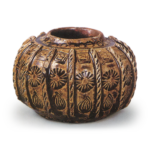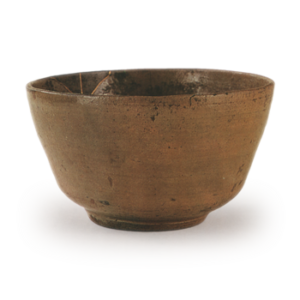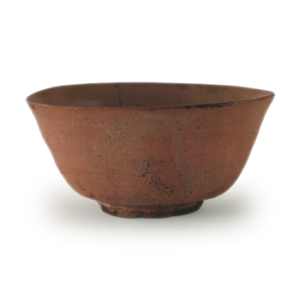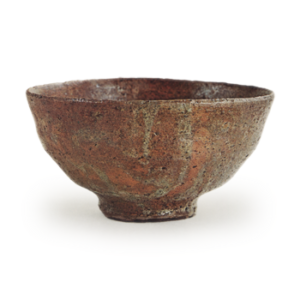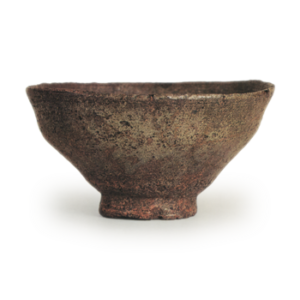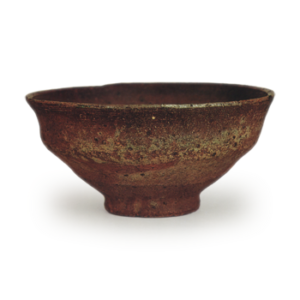

Excavated from Seatgadou Kiln, Seto City, Aichi Prefecture, Japan
14th century
Height 6.1cm, mouth diameter 4.0cm, 90cm, bottom diameter 5.2cm
This small flattened round-bodied vessel is also called yaku in Seto, but its use is not entirely clear. Smaller types have been seen since around the middle of the Kamakura period, when Kosedo was established, but their peak period was from the late Kamakura to the Nanbokucho period, and they were produced in large quantities at most kilns, along with mizusuri. Some of them have a body diameter of over 10 cm. Some of the pieces are unmarked, but many of them were decorated with inka paintings and flowers during the peak period, and some of them are luxurious pieces combining those paintings and flowers.
This large example is from the peak period, and the entire surface of the vessel is lavishly decorated with a combination of seal and paste flower techniques. It is wheel-thrown and has a broad concave shoulder for the lid. Fourteen thin clay cords are pasted on the body, and the surface has been incised diagonally to give the appearance of riding cords. The sealed floral design consists of a bamboo tube in the shoulder groove, a swastika, chrysanthemum, and flower design enclosed in a double square between the clay cords, and a chrysanthemum design stamped on the side rim near the bottom. The iron glaze is an uneven brownish-brown color, but the effect is blackish-brown due to yuzu accumulation in the recesses of the sealed floral design. The lid has a cord in the center of the upper surface and is decorated with an affixed floral motif, but it is not a joint lid. This is one of the finest of the many Koseto goshi.

